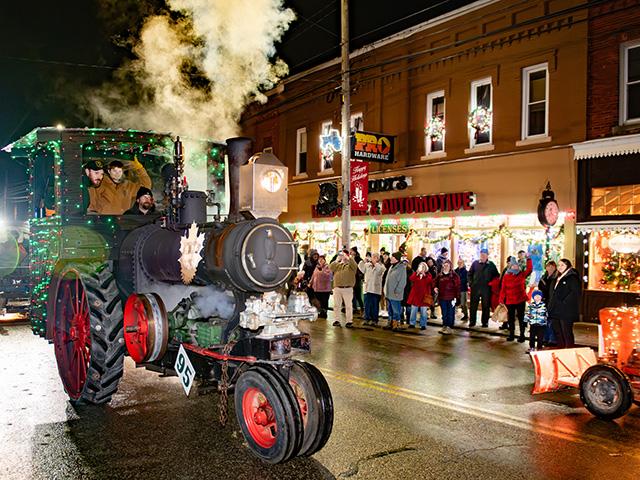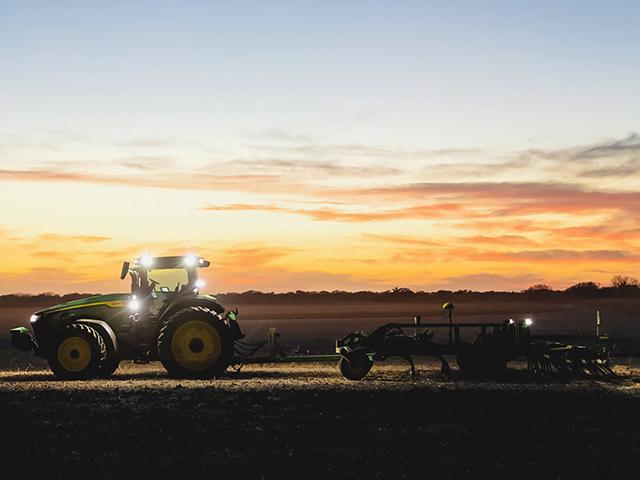John Deere Analyst Day Takeaways
Deere's Bold Vision
John Deere's "Leaps Unlocked" Analyst Day in early June offered a remarkable, two-hour look into how Big Green views its -- and farming's -- opportunities over the next few years. Deere is a machinery manufacturer foremost, but it will tell any who will listen that it's also a premier technology company. A technology company learning how to use the intelligence gleaned from what may soon be millions of camera/sensors focused not on acres but on individual plants -- sensing and acting in the field at normal operating speed. It's a lot of plants. Ninety million acres of corn equals 4 trillion plants. And, each has its own story to tell, Deere believes.
The farm-equipment company acknowledges the challenge of pulling that much plant-level intelligence from in-field sensing and then pushing it through the analytical systems that give farmers the ability to act in time, to both hit a near-term, tactical target during the days of the same growing season and unearth careerlong strategic insight into the potential of crops not yet planted.
Data building on data, sensors dissecting passes in the field: Instead of having 40 production years to produce the perfect outcome, think of 40,000 opportunities, company officials say.
It's interesting that Deere's understanding of the future is not how it can help farmers remove variability from their production systems but how its sensing and analytical systems drive profit and sustainability in a world that can only be variable -- that each seed is set down in the right place, that every follow-on treatment gives that seed opportunity to reach its full potential.
Deere calls it "Sense and Act" -- sensing, collecting information down to the plant level. And, then, acting -- allowing growers to act, to execute data-driven actions across every square foot of ground. In short, as farmers sense, they can act.
John May, Deere chairman and CEO, offered analysts Deere's rationale for its technology direction.
"The world is changing faster than ever, specifically in agriculture. The challenges our customers face are growing in complexity. And, society is asking more and more of them. The days of abundant resources and farming inputs is over. Labor, fertilizer and crop-protection inputs ... are all growing in scarcity. And, they're increasing in cost. Weather patterns are becoming more volatile, governments are increasing regulations and customers are increasingly interested in more sustainably grown food, fiber and fuel. Older approaches to increase agricultural output are no longer viable. In the past, we would rely on planting more acres, increasing horsepower and applying more nutrients. In short, we could always do more with more. However, today in agriculture, we must do more with less."
Here are five takeaways from Deere's Analyst Day:
P[L1] D[0x0] M[300x250] OOP[F] ADUNIT[] T[]
1. AS IMPORTANT AS SUNSHINE
Connectivity is as important to future farming as is sunlight to growing crops. Deere eyes new opportunities in satellite technology -- on top of telecommunications -- to connect farmers to the cloud and to their machines (manned and unmanned), machines to machines and field-level data to trusted advisers. Connectivity is foundational to creating customer value across the production system, Deere believes. It's targeting for the connectivity revolution 500 million managed acres through its Operations Center platform (currently with 250 connected software companies and 300,000 connected ag machines growing to three times that by 2026).
2. SENSING PIPELINE
Deere foresees farming decisions informed by smart machines that vacuum up data and use it in real time. It's row-cropping farming with many more cameras. Decisions like seed depth, variety, population and starter fertilizer are all influenced by camera-enabled sensing scans over growing crops -- including data gleaned from previous year's crops.
For example, consider a planter sensing soil variables like nitrogen, phosphorus and potassium in real time, that agronomic intelligence used to build prescriptive strategies for the remainder of the same crop year. Or, Deere's See & Spray platform providing plant stand counts, that data informing same-year fertilizer applications.
3. TESTING NEW MACHINES
Deere views See & Spray technology and Deere's 8R autonomous tractor tool as transformational (see photos above). The company expects to expand See & Spray applications beyond corn, cotton and soybeans. Within the next couple of years, it plans to enable the spraying system to apply fungicides, insecticides and nutrients -- and do it faster with less product.
Sense and Act -- robotics combined with artificial intelligence -- is at the heart of four machines in advanced testing with customers. Two would operate in harvest, one in planting and the fourth in construction. There are more in Deere's pipeline, including newly enabled implements pulled by the 8R tractor and others.
4. EYES OF THE MACHINE
Deere has designed a high dynamic range camera for its See & Spray system. It can see in the same image plants both in sunlight and shadows, and read their conditions. The company expects it will soon be selling close to a million of these cameras every year with its equipment.
5. FULLY AUTONOMOUS
Deere plans a fully autonomous corn and soybean production system by the year 2030. That means fall and spring tillage, planting, spraying and harvesting. Think of grain carts and autonomous See & Spray, among other systems.
**
-- Editor's note: The Consumer Technology Association (CTA) announced the first keynote speaker for CES 2023 will be John Deere Chairman and CEO John May. This will be the first time in CES history (formerly known as the Consumer Electronics Show) that an agriculture technology company executive will take the main stage for a keynote at the show. "The opportunity for technology and sustainability to positively impact the world is most present in agriculture, where farmers continue to be challenged to feed our growing population," May says.
John Deere first debuted at CES 2019 and has been exhibiting each year since. CES 2023 will take place in Las Vegas, Nevada, Jan. 5-8, 2023.
-- Follow Dan Miller on Twitter @DMillerPF
[PF_0922]
(c) Copyright 2022 DTN, LLC. All rights reserved.




